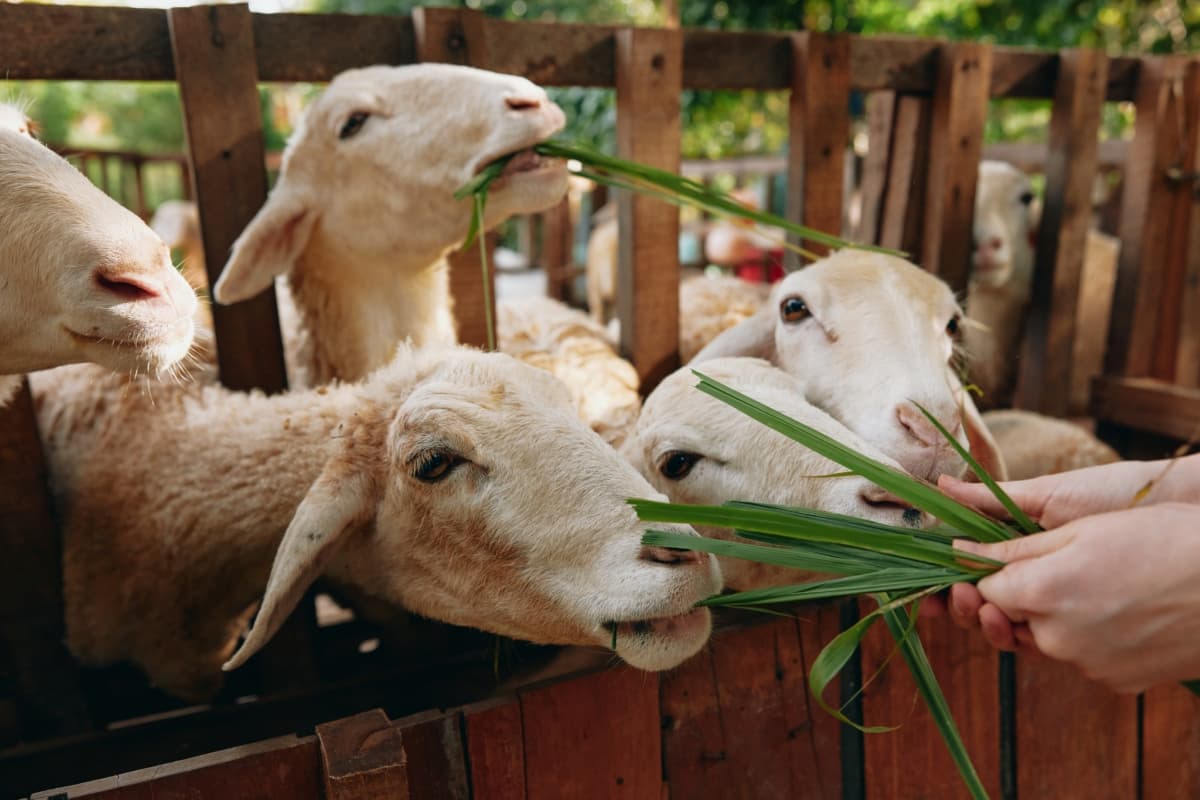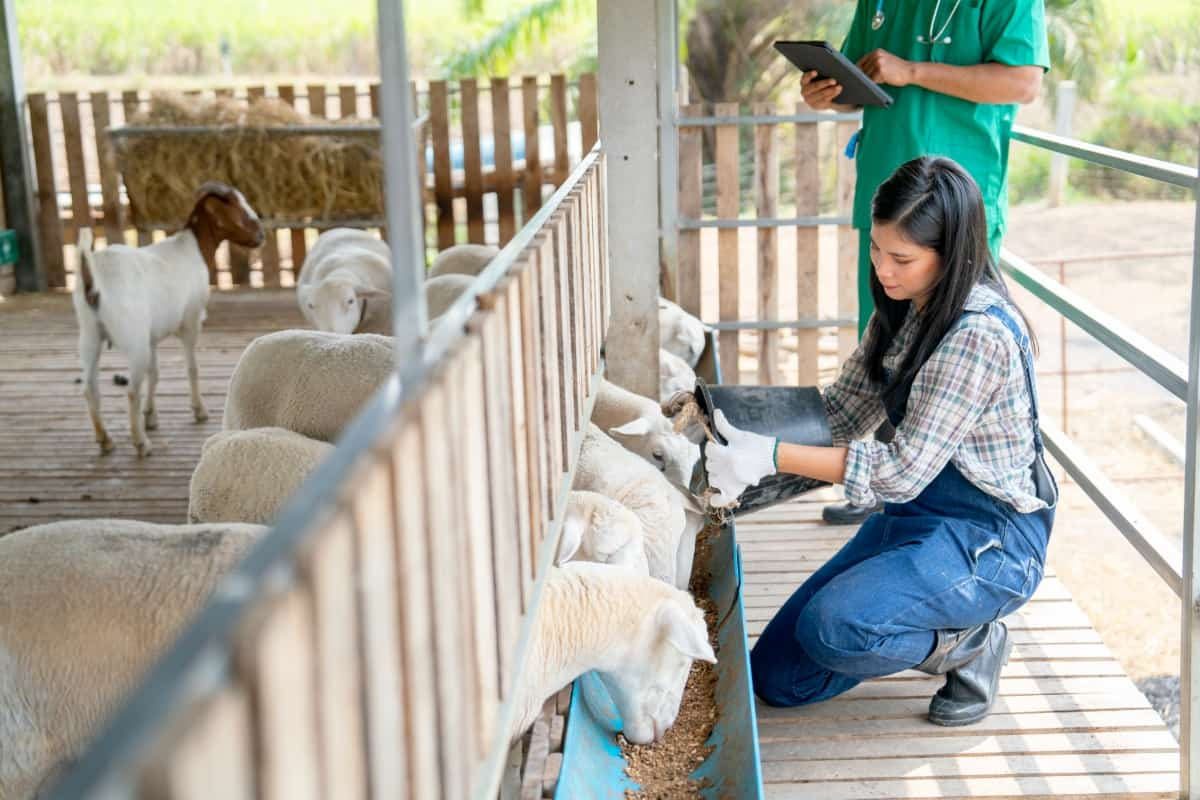Pelibuey sheep farming is gaining traction due to the breed’s adaptability and the quality of its products. Raising Pelibuey sheep involves a comprehensive approach that includes proper Pelibuey sheep care, understanding the Pelibuey sheep breed profile, and utilising effective breeding techniques.
These sheep are renowned for their meat production, and their wool and hide also have significant uses. Health management in Pelibuey sheep is crucial for maintaining a productive flock, and their climate adaptability makes them suitable for various farming environments. Pelibuey lambing practices, feeding, housing, and vaccination are key components of successful farming with this breed, reflecting the latest trends in sustainable agriculture.
Introduction to Pelibuey Sheep
History and Origin: Pelibuey sheep have a rich history and origin that trace back to West Africa, but they have become particularly prevalent in parts of the Caribbean and Latin America. These sheep are highly valued in tropical and subtropical regions for their adaptability to hot climates and contribution to local farming systems.
Breed Characteristics: The breed characteristics of Pelibuey sheep include their hair coat, which is well-suited to warm climates, and their remarkable fertility and hardiness. These traits make them an excellent choice for farmers looking to optimise productivity and sustainability in challenging environments.
Pelibuey Sheep Price: The price of Pelibuey sheep can vary widely based on factors such as age, sex, and breeding quality, with prices typically ranging from $100 to $250. This affordability, combined with the breed’s desirable traits, makes Pelibuey sheep an attractive option for small-scale and commercial farmers.
Pelibuey Sheep Lifespan: Pelibuey sheep typically live for about a decade, influenced by the level of care and management they receive. This longevity benefits farmers looking for a long-term investment in their livestock.
Pelibuey Sheep Size: Pelibuey sheep are medium-sized animals, with weights ranging from 75 to 120 pounds and standing heights of about 20 to 30 inches. This size makes them manageable and versatile for various farming setups.

Raising Pelibuey Sheep
Breed Profile
Physical Description: The physical description of Pelibuey sheep includes a range of coat colors, from white to brown, and multicolored patterns. Their hair is short and coarse, an adaptation to their native hot climates, and they have a lean, muscular build that indicates their meat production capabilities.
Temperament and Behavior: Pelibuey sheep are known for their docile temperament and easy-going behavior, making them popular among farmers. They are adaptable and thrive in various environments, showing resilience in climatic challenges.
Uses of Pelibuey Sheep
Meat Production: Pelibuey meat production is a key aspect of the breed’s value, with the sheep being known for their lean, flavorful meat that is a staple in many cuisines. The efficiency of meat production in Pelibuey sheep makes them a preferred choice for farmers focused on meat yield.
Wool and Hide Uses: Although Pelibuey sheep are not primarily raised for wool, their hide has significant value, particularly in producing leather goods. The durability and quality of Pelibuey sheep hide make it suitable for various applications, from clothing to upholstery.
Role in Sustainable Farming: Pelibuey sheep are gaining recognition for their role in sustainable agriculture due to their contributions to biodiversity, soil fertility, and resource efficiency. Their adaptability to harsh climates and minimal needs make them an ideal choice for eco-conscious farming practices.
In case you missed it: How to Raise Babydoll Sheep: Farming Facts, Profile, and Care

Habitat and Environmental Adaptability
Climate Adaptability: Pelibuey sheep’s climate adaptability is one of their most notable traits, allowing them to thrive in hot, arid conditions where other breeds might struggle. This resilience makes them particularly suited to tropical and subtropical farming environments.
Housing and Shelter Needs: Pelibuey sheep housing and shelter needs are minimal, reflecting their hardy nature. Providing adequate shelter and protection from harsh weather ensures the well-being and comfort of these sheep across different environments.
Feeding and Nutrition
Basic Dietary Requirements: The basic dietary requirements of Pelibuey sheep are relatively simple, consisting mainly of grasses and forbs. Their efficient digestion allows them to make the most of available forage, reducing the need for supplemental feed in many cases.
Supplemental Feeding Practices: Supplemental feeding practices for Pelibuey sheep may include providing additional grains or hay during periods of scarce forage or to meet the nutritional needs of pregnant or lactating ewes and growing lambs. These practices ensure optimal health and productivity throughout the flock.
Health and Wellness
Common Health Issues: Common health issues in Pelibuey sheep include parasitic infections, respiratory conditions, and hoof problems. Prompt identification and timely treatment of these concerns are vital to safeguarding the overall health and well-being of the flock.
Vaccination and Preventative Care: Vaccination and preventative care are crucial in Pelibuey sheep farming, with routine vaccinations against common ovarian diseases and regular health checks being standard practice. These measures, along with good husbandry practices, help to ensure the longevity and productivity of Pelibuey sheep.
Breeding Practices
Selective Breeding Techniques
Selective breeding techniques in Pelibuey sheep farming focus on enhancing traits such as heat tolerance, fertility, and meat quality. By choosing the best males and females based on these characteristics, farmers can gradually improve their flock’s overall quality and productivity. This approach also involves keeping detailed records of lineage and performance to make informed decisions about future breeding pairs.
Managing Breeding Stock
Managing breeding stock effectively is crucial for the success of a Pelibuey sheep operation. This involves guaranteeing the health and welfare of breeding animals, rotating males to avoid inbreeding, and periodically introducing fresh genetic material to uphold a diverse and robust gene pool. Proper management also means providing optimal nutrition and care, particularly for pregnant and nursing ewes, to support the health of both the mothers and their offspring.
Lambing and Flock Management
Care of Ewes and Lambs
The care of ewes and lambs is paramount during the lambing season. This involves providing a clean, safe environment for lambing, monitoring ewes for signs of labour, and being prepared to assist with deliveries if necessary. Post-lambing care includes ensuring lambs receive colostrum within their first hours of life and closely monitoring the health of both ewes and lambs in the subsequent weeks.
Flock Expansion Strategies
Flock expansion strategies must be carefully planned to balance growth with available resources. This can involve retaining high-quality female lambs as future breeding stock and assessing pasture and feed availability to support additional animals. Sustainable expansion practices also consider the flock’s long-term health and genetic diversity alongside market demands for Pelibuey sheep products.
In case you missed it: Ultimate Guide to Raising Kerry Hill Sheep: Farming Facts, Profile and Care

Wool and Hide Management
Shearing Techniques
While Pelibuey sheep are not primarily known for their wool, managing their coat through shearing can contribute to animal comfort and hygiene. Shearing techniques for Pelibuey sheep involve removing the hair coat close to the skin, typically done once a year to help the sheep stay cool in hot climates and maintain skin health.
Processing and Marketing
The processing and marketing of Pelibuey sheep wool and hides involve cleaning, treating, and preparing the materials for various uses. While the wool may have limited applications, the hides can be processed into high-quality leather. Effective marketing strategies highlight the durability and quality of Pelibuey sheep hides to attract buyers in the fashion, upholstery, and craft industries, adding value to the Pelibuey sheep farming operation.
In case you missed it: Top 10 Sheep Weight Gain Supplements: Best Sheep Weight Gain Formulas

Conclusion
Raising Pelibuey sheep offers farmers a sustainable and profitable opportunity in warm climates, thanks to their remarkable adaptability, efficient meat production, and valuable hides. By implementing effective breeding, lambing, and flock management practices, along with careful attention to health and nutrition, farmers can ensure the vitality and growth of their Pelibuey sheep operations. Embracing these practices enables the conservation of this resilient breed and contributes to the sustainability of global sheep farming.
Note: The images presented in this post are intended solely for representation purposes. The images are meant to serve as visual aids and should not be relied upon as accurate representations of their real-life counterparts.
- Feed Your Flock for Less: Top 10 Tips to Save on Chicken Feed
- Ultimate Guide to Ossabaw Island Hog: Breeding, Raising, Diet, and Care
- Hatching Answers: The Top 10 Reasons Your Chickens Aren’t Laying Eggs
- Eggs and Economics: Breaking Down the Cost of Raising Backyard Chickens
- Defend Your Greens: Proven Methods to Keep Iguanas Out of Your Garden
- Ultimate Guide to Cinnamon Queen Chicken: A Comprehensive Guide for Beginners
- Ultimate Guide to California Tan Chicken: Breeding, Raising, Diet, Egg-Production and Care
- Ultimate Guide to Marsh Daisy Chicken: Breeding, Raising, Diet, and Care
- 10 Types of Chicken Farming Businesses You Can Start for Profits